#single board computer
Explore tagged Tumblr posts
Text
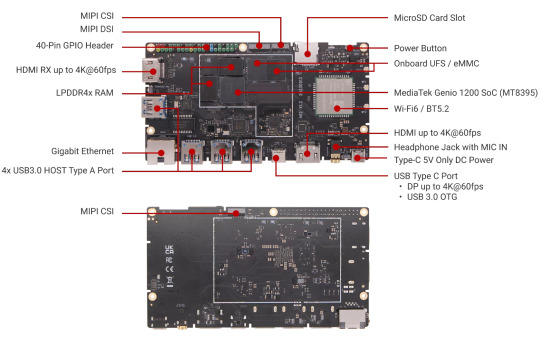
Definitely keeping an eye on the Radxa NIO 12L. Sounds like a great option for anyone wanting to play around with AI stuff. The Genio 1200 processor is intriguing!
3 notes
·
View notes
Text
DIETPI RELEASES 8.12 COMES WITH A NEW IMAGE FOR THE NANOPI R6S AND THE RADXA ROCK 5B
Version 8.12 of this Linux distribution targeted for SBCs was released by DietPi this month. The inclusion of compatibility for the OKdo ROCK 5B and NanoPi R6S SBCs is particularly noteworthy. The latest top-of-the-line Rockchip RK3588 SoC with quad Cortex-A76 and quad Cortex-A55 is included in the ROCK 5B. In comparison to solutions like Debian, Raspberry Pi OS, and Armbian, what makes DietPi attractive as an operating system for both higher-end and lower-end SBCs is that it places a major emphasis on being the most efficient. Smaller binary size, less RAM utilization, and better performance are the results of this.
2 notes
·
View notes
Text
Possibly Building a Raspberry Pi 5 Home Theater in the Future.
There was a time when I would have gotten the news about the Raspberry Pi 5 launch much sooner. I’ve always liked the idea of these single board computers, and Raspberry Pi has been and continues to be a standard. The trouble for me is finding a use for them. I have always got a bunch of decaying technology sitting around waiting for a purpose. I decided to look into it for a home theater…

View On WordPress
0 notes
Text
How to Change the Password of the Root Account for Logging in to the OK-MX9352-C SBC?
This article applies to the Forlinx OK-MX9352-C platform with Linux 5.15.52 operating system.

How to change the root account and password for logging in to the Single board computer?
root@ok-mx93:~# passwd root //Modify root password command
New password://Enter the new password (The password is not displayed, just type it directly);
Retype new password://Then follow the instruction retype the password
passwd: password updated successfully
The password is successfully changed.
Then we can use new password to restart the EVK.
OKMX9352-C Single Board Computer
The default root user does not have a password set. To increase security, we can set a password with the password command. However, if the board is mass-produced, manually setting the passwords one by one will be very tedious. Therefore, we need a way to have the EVK automatically come with a default password after the re-burning.
Specific conduction is as follows:
1. After the board boots, set the password for the root user with the password command.
2. Two new files are created in the /etc directory: passwd and shadow.
3. Unzip the filesystem image into the development environment and put the above two files into the /etc directory, replace the previous file with the same name and unzip it again.
4. Re-burn this file system image to the EVK.
Originally published at www.forlinx.net.
0 notes
Text
Banana Pi : A compact computer
Looking for a single-board computer that packs a punch? Look no further than Banana Pi! 🍌🔥
Banana Pi is a compact and versatile SBC that offers a range of features for your DIY projects. With its powerful processors, ample RAM, and diverse connectivity options, it's a force to be reckoned with in the SBC world. 🚀
Whether you're into home automation, media centers, or gaming consoles, Banana Pi has got you covered. Its GPIO pins and additional interfaces open up endless possibilities for creativity and innovation. 🎮🔌
Not only does Banana Pi support various operating systems like Linux and Android, but it also boasts an active and supportive community. Troubleshooting, project ideas, and software development discussions are just a few clicks away. 💡🌐
So, if you're a maker, hobbyist, or just curious about SBCs, give Banana Pi a try. Its compact size and powerful performance make it a hidden gem worth exploring. Get ready to unleash your creativity with Banana Pi! 🍌💡✨
0 notes
Text
I recently acquired this little single board computer. It is a BBC Microbit which is designed to help teach computing. The website supports both block programming and Javascript. I did the first block programming heart lesson. It was extremely easy. There is an online emulator so you can go through the steps to build your program and when you are done, download it to your PC. It shows up as a .hex file which you then can copy to your microbit through the USB cable which is also what powers the card. The card has a 5 x 5 matrix display as you can see in the picture. The oval with the two dots is a touch sensor. It has a compass, an accelerometer, 19 GPIO pins, Bluetooth and a microphone. So lots of things to play with. I got this as a starter kit, so it had an adapter so it could be plugged into a breadboard along with wires, resistors and LEDs. So this could be a lot of fun.
0 notes
Text
Using the Jetson Orin Nano with CSI Cameras
Adding a Raspberry Pi v2.1 camera to the Jetson Orin Developer Kit requires an adapter cable. Here's how to install it.
The NVIDIA Jetson Orin Nano Developer Kit includes two 22 pin MIPI-CSI cameras. The Raspberry Pi v2.1 camera uses a 15 pin connector. You need to install an adapter cable to use the two together. Looky here: Background The Jetson Orin Nano includes 2 MIPI CSI-2 camera connectors with 22 pins. The pitch of the pins is 0.5mm. Previous Jetson developer kits with CSI camera connectors use 15 pins.…
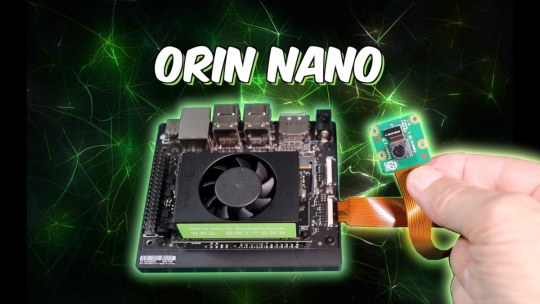
View On WordPress
#Cable Swap#Camera Installation#Camera Setup#Computer Vision#CSI Camera#Demonstration#Developer Kit#DIY Electronics#Edge AI#Guide#Jetson Orin Nano Projects#NVIDIA Jetson Orin Nano#Raspberry Pi Camera#Ribbon Cable#SBC#Single Board Computer#Tutorial
1 note
·
View note
Text
It's a little bit further into your relationship with art student!Bakugo and you've been working together now for the good portion of two semesters...
Except for whatever reason, your professor assigns him a different model for the upcoming final, and when you go to look for him after class (since at the announcement, he stormed out of the room in frustration, slamming back his desk and knocking over the overflowing recycling bin by the door), you find him weeping in frustration in the janitor's closet next door adhfnlkjadshfk
#bakugo#for some reason thinking abt him red at the height of his cheeks kinda teary cuz he already planned out his final w/ u as the muse ...#is doing something to me#trying to hide his sniffles and wiping his eyes with the heel of his hands. getting charcoal on his face#i feel like he's one of those artists who cries when something goes wrong....#like mean angry tears bc he did something wrong and he's so sad but doesn't want to admit it#cuz he's also the type to literally destroy work over one single mistake#AND you have to be the one to comfort him. not n*de tho ofc#WAHHHH#kind of a carmy moment from the bear LOL#brain does not compute....#and then when he's done freaking out he freaks out AGAIN realizing this means you'll have to be n*ked for someone else#cuz even tho u have... lowkey when u started working with him u stopped working with other artists#asdjlkfaskd AND WHAT IF IT'S KIRI OR DEKU#kiri i can see him getting on board with but deku#he's crying AGAIN LMFAOOO#afjadfj people after class are asking u if he's okay and youre like. we're not even dating but. no. he's not. a/ksjlfkasdjkl#shii posts#gen#art student bakugo
176 notes
·
View notes
Text

?!?!??!! A fellow SBC/Weird Chinese Handhelds enjoyer?!!?!? Aaaa!!! @gundambradley
#I love single board computers so much#finding someone who knows the name powkiddy actually made me get jumpscared
9 notes
·
View notes
Text
this morning I got maybe 85% of the way done with a script to auto-softblock anyone that tries to follow me, but the tumblr.js library seems to claim the /block API endpoint just doesn't exist and I assume staff considers that lower priority than the bot swarm so I'm stuck waiting for them again. the number of bot followers to this account has since passed 2k.
#oliver vs bots#also I don't have any like#spare single board computers or whatever to leave it running on so I'd have to keep a laptop open. actually I do have an arduino somewhere#but don't think it's got internet capabilities so it would still have to be plugged into something. back to the laptop issue
13 notes
·
View notes
Text
HOW TO GET STARTED WITH OKDO ROCK 5 MODEL B 8GB SINGLE BOARD COMPUTER
Beginner's guide for Rock 5B with instructions on how to set it up and prepare it for basic use. You must be aware of the model and hardware version of the board when you get it. The details are printed on the board's top side. As much as feasible, we shall introduce the board information.
2 notes
·
View notes
Text
Which SBCs are best for your DIY projects
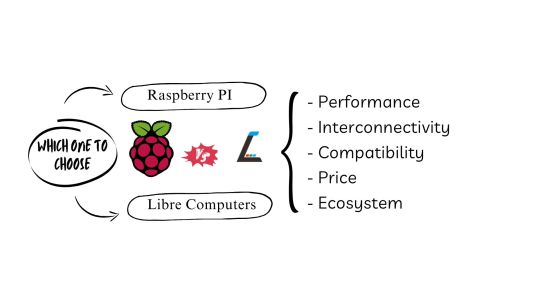
In the world of DIY electronics and embedded system projects, single-board computers (SBCs) reign supreme. Among the top contenders, the Raspberry Pi and the Libre Computer Board stand tall, each offering a unique set of features and capabilities. In this blog, we embark on a technical journey to compare these two titans, helping you make the perfect choice for your next DIY endeavour.
1. Efficiency: Raspberry Pi and Libre Computer Boards Go Head to Head
The Raspberry Pi boasts a reputation for dependability and robust performance, thanks to its Broadcom CPU. With models ranging from quad-core ARM Cortex-A53 to quad-core Cortex-A72, it's a versatile choice for a wide spectrum of applications. The Raspberry Pi 4, in particular, shines with its powerful CPU and GPU performance.
Libre Computer Boards, on the other hand, come in various models and CPU architectures, including ARM Cortex-A53 and Cortex-A72. These boards offer competitive performance and often provide more RAM options than their Raspberry Pi counterparts.
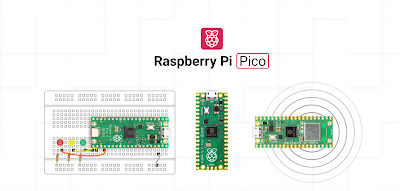
2. Capabilities of the GPU: Graphics Galore
Raspberry Pi models are equipped with Broadcom VideoCore GPUs, optimized for multimedia applications, making them perfect for video playback, gaming, and graphics-rich projects.
Libre Computer Boards offer ARM Mali GPUs in some models, delivering excellent graphics performance. What's more, certain models support GPU acceleration for machine learning tasks, making them a top choice for AI and computer vision projects.
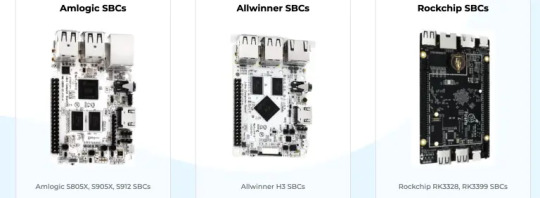
3. Interconnectivity: Ports, Pins, and More
Raspberry Pi boards come well-connected, featuring multiple USB ports, Ethernet, HDMI, and GPIO pins. The Raspberry Pi 4 even boasts a USB-C port for charging and supports dual-monitor setups via micro HDMI ports.
Libre Computer Boards offer a similar array of connectivity options, including USB 3.0 ports, Gigabit Ethernet, and HDMI. Some models, like the Tritium H5, sweeten the deal with eMMC storage for faster data access.
4. Operating System Compatibility: The Heart of the Machine
Raspberry Pi shines with its extensive community support and an extensive library of compatible software. Raspbian (now Raspberry Pi OS) is a highly optimized Linux distribution tailored specifically for Raspberry Pi devices, offering user-friendliness ideal for beginners.
Libre Computer Boards, while capable of running various Linux-based operating systems, may have more limited community support compared to the Raspberry Pi.
5. Price Wars: Budgeting for Brilliance
Raspberry Pi remains an unbeatable value, offering affordable options like the Raspberry Pi Zero and the Raspberry Pi 3A+. Even the higher-end Raspberry Pi 4 remains budget-friendly.
Libre Computer Boards, while slightly pricier than their Raspberry Pi counterparts, often pack additional features and better hardware specs, making them a compelling choice for enthusiasts.
6. The Ecosystem and the Community: Strength in Numbers
The Raspberry Pi boasts a vast and active community, resulting in an abundance of documentation, tutorials, and third-party accessories. This makes it an excellent starting point, especially for newcomers.
While the Libre Computer Boards community is growing steadily, it may not rival the sheer size of the Raspberry Pi community. However, if you're experienced with SBCs, this might not be a deal-breaker.
7. Unique Features: Tailored to Your Needs
Raspberry Pi stands out with specialized add-ons like the Raspberry Pi Camera Module for photography and video projects and the Raspberry Pi Pico for microcontroller applications.
Some Libre Computer Boards bring unique features to the table, such as the ROC-RK3328-CC with PCIe support, allowing you to integrate custom hardware components seamlessly.
Conclusion: Finding Your Perfect SBC Match
Choosing between a Raspberry Pi and a Libre Computer Board hinges on your project requirements and your familiarity with single-board computers.
For beginners and those seeking a vast ecosystem, the Raspberry Pi is a fantastic choice. However, if you require more power and flexibility, Libre Computer Boards won't disappoint.
Consider factors like performance, GPU capabilities, connectivity, OS support, price, and community support when making your decision. Ultimately, both SBCs offer advantages and trade-offs, and your choice will depend on your project goals and expertise.
So, whether you're a Raspberry Pi enthusiast or a Libre Computer Board aficionado, the world of DIY electronics is at your fingertips. Happy tinkering!
Stay tuned for more exciting tech insights and DIY projects! Don't forget to follow us for updates and join our vibrant tech community.
#DIY projects#Libre computers#Raspberry community#Raspberry Pi#Raspberry Pi 3A#Raspberry Pi 4#Single board computers
4 notes
·
View notes
Text
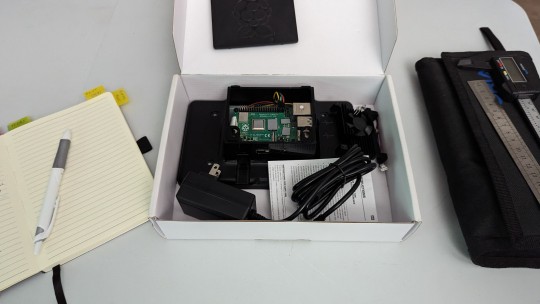
Starting to design my deck. It's going to be a raspberry pi 4 on the raspberry pi touchscreen. I want to add a keyboard and battery to it, not sure on hardware for that yet.
I've been wanting to do a deck for years, ever since I first watched Hackers tbh. I don't need one, but these parts and more have been sitting around my place for too long. Time for them to have a purpose.
I'm going to design and 3d print the case myself. Codenamed Project Ara (Altar) for reference.
6 notes
·
View notes
Text

#Single Board Computer Market#Single Board Computer Market Share#Single Board Computer Market Size#Single Board Computer Market Research#Single Board Computer Industry#What is Single Board Computer?
0 notes
Text
Checking out the Benefits of Growing Pastimes in Your Life
""
In today's hectic world, it's easy to obtain captured up in the hustle and bustle of every day life. Nevertheless, sculpting out time for hobbies can be an effective method to relax, de-stress, and reconnect with yourself. Whether it's paint, horticulture, food preparation, or playing a musical tool, taking part in leisure activities enables you to take advantage of your creative thinking and share on your own in a purposeful means. Hobbies can also offer a sense of success and boost your confidence as you discover new abilities and boost over time.Moreover, hobbies can have a positive effect on your overall well-being. Research study has revealed that participating in recreation activities can minimize stress, improve mood, and even enhance cognitive function. By dedicating time to your hobbies, you are buying your mental and emotional health and wellness, producing an area for relaxation and satisfaction in your day-to-day routine. So, why not check out brand-new pastimes or reignite your enthusiasm for old ones? Welcoming leisure activities can lead to a more fulfilling and balanced life, permitting you to reenergize and refuel your spirit in the midst of life's demands.
Read more here https://all-things-pi.top/blog/product-reviews/best-picks-dvozvo-orange-pi-5-5b-case-power-supply-and-cooling-fan-kit
0 notes